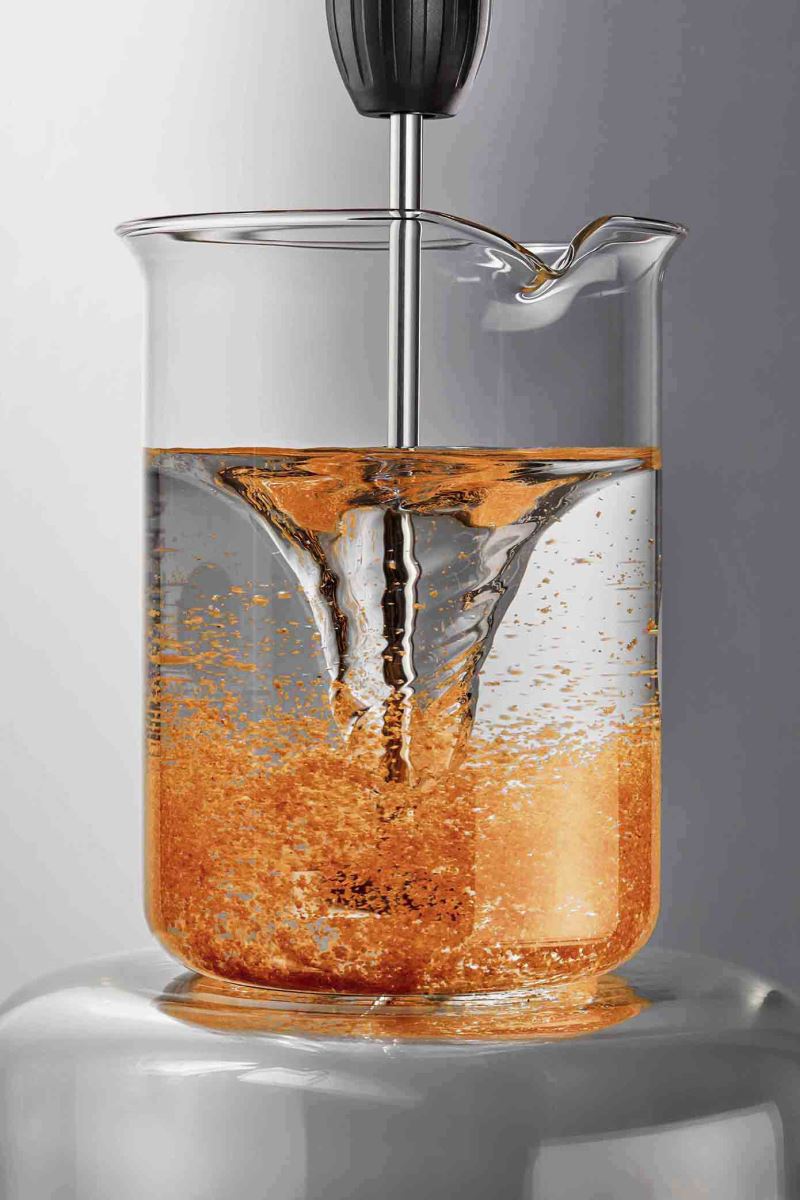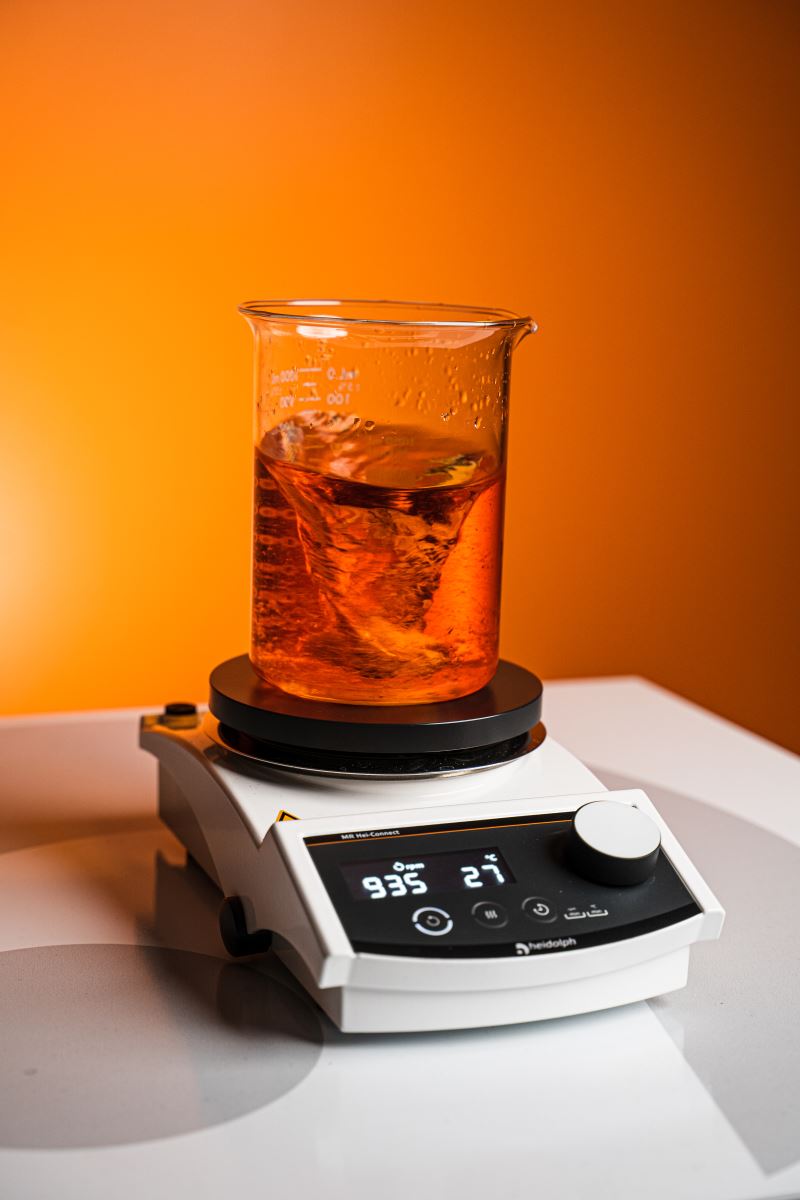The majority of laboratories require equipment to help mix their samples - but what kind of stirrer will best suit your lab?
Magnetic and overhead stirrers both have their pros and cons, but before purchasing, here are a few things to consider:
- Volume
- Viscosity
- Speed
- Heating Requirements
- Vessel Type
- Application
Volume
The size of the volume samples you plan on stirring will play a significant role in what kind of stirrer to use. If your lab is processing smaller volume samples, a magnetic stirrer will be the way to go. Most magnetic stirrers are most effective with 20 or fewer liters volume samples.
Samples that are larger than 20 liters will require a more robust instrument. Depending on the model, overhead lab stirrers can mix anywhere from 50 to 100+ liters.
 Viscosity
Viscosity
When it comes to the viscosity of your samples, overhead stirrers are the superior of the two. While magnetic stirrers are sufficient for water-like samples, overhead stirrers will be able to conquer higher viscosity samples such as lotions, gels, organic compounds, and biodiesel fuels.
Speed
As measured by rotations-per-minute (RPM), speed is another crucial consideration when choosing your stirrer.
Once again, overhead stirrers will provide you with a broader range of applications that can be mixed. Depending on the model, overhead stirrers can range from 10 to 2,000 rpm.
If using a magnetic stirrer, the rpm can change depending on the magnetic stir bar being used. Some stir bars can become disengaged from the rotating magnet at higher speeds, causing the stir bar to move around and allow you not to achieve the desired mix.
 Heating Requirements
Heating Requirements
If your samples must be heated while stirred, magnetic stirrers are available with a heating function, giving you an all-in-one tool.
Heating with overhead stirrers will require more added equipment. The two common solutions for a source of heat are heating mantles or a hotplate. Heating mantles are ideal when working with round bottom flasks and come in various sizes and configurations.
Vessel Type
Magnetic stirrers can be used with open or closed vessels. Flat bottom flasks will give you the best results, with controlled rotation of the stir bar and the best contact with the magnetic agitator.
Overhead stirrers can work with both flat bottom flasks and closed reaction systems. Closed reaction systems will allow you to operate under pressure or vacuum conditions with the proper seals installed around the mixing shaft.
Application
The choice will ultimately come down to the applications you are performing. For example, magnetic stirrers will fit your needs if working with mainly low viscosity substances. On the other hand, if you work with any high viscosity samples or require a faster rpm, then an overhead stirrer will be the best choice for you.
Heidolph offers a wide range of Magnetic Stirring Hotplates and Overhead Stirrers.
Heidolph's Hei-PLATE Series of magnetic stirring hotplates is uncompromising in quality and reliability. Hei-PLATEs impress with sealed and fireproof housing and a unique Kera-Disk hotplate coating, which is chemical resistant and allows faster heat-up times.
The Hei-TORQUE Series of overhead stirrers enrich your lab with enhanced performance, reliability, and powerful stirring for years. The Hei-TORQUE is equipped with the latest drive technology, and the sealed housing protects the inside from vapors and dust.
For further information and technical specs visit: